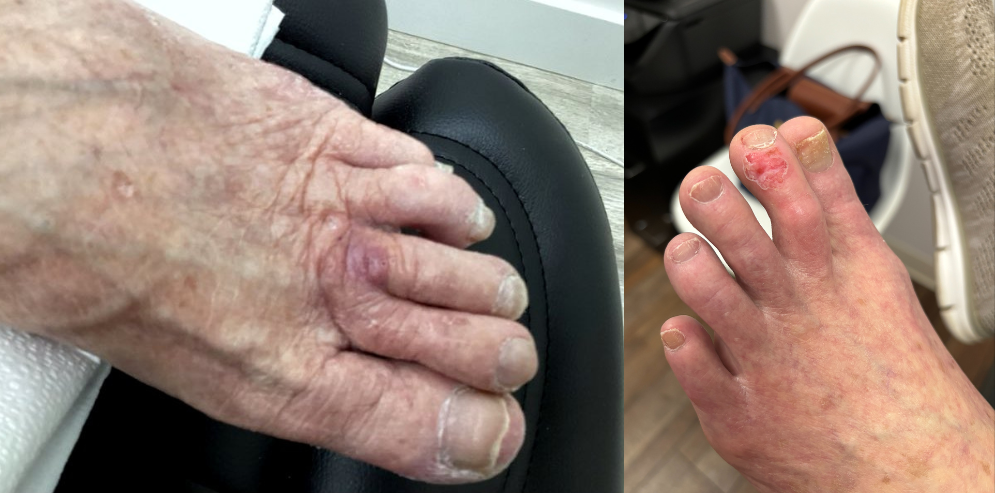
If you were recently diagnosed with one of several common forms of skin cancer, you may understandably be going through a range of emotions. Skin cancer is the most common form of cancer worldwide, and it is normal to experience unease, anxiety, and other feelings following a diagnosis.
What may provide some peace of mind is the knowledge that common forms of skin cancer are highly treatable once detected. Additionally, knowing some common skin cancer facts and statistics may help to ease your mind as you navigate the treatment process. And, knowing these facts for yourself and sharing them with others can increase the likelihood of preventing skin cancer in the future.
One of GentleCure’s most prevalent goals is to educate people with skin cancer so that they can be better-informed participants in their treatment decisions. We hope this overview of skin cancer facts proves useful as you explore your treatment options.
Common Skin Cancers: Facts & Statistics to Know
Facts from the American Academy of Dermatology
- Research estimates show that common skin cancers, including basal cell skin cancer and squamous cell skin cancer, affect more than 3 million Americans every year.
- These common forms of skin cancer can affect anyone, no matter their skin color.
Facts from the Skin Cancer Foundation
- About 90 percent of common skin cancers are caused by exposure to ultraviolet (UV) light.
- Basal cell skin cancer is the most common type of skin cancer, with around 4 million diagnoses each year.
- Squamous cell skin cancer is the second most common type of skin cancer, with an estimate of more than 1 million cases diagnosed in the U.S. each year.
- Although skin cancer is not contagious, individuals who have had an organ transplant are approximately 100 times more likely to develop squamous cell skin cancer, compared to the general population.
Skin Cancer Rates
- One in five U.S. Americans will develop skin cancer by the age of 70.
- Skin cancer is the most common type of cancer in the U.S.; in fact, skin cancer is more common than all other cancers, combined.
- In the U.S., 9,500 people are diagnosed with skin cancer every day.
- Skin cancer rates are rising: Diagnosis of non-melanoma skin cancers increased by 77% between 1994 and 2014; new invasive melanoma cases rose by 44% between 2011 and 2021.
- Skin cancer rates vary depending on ethnicity and skin tone. However, in general, women are more likely to be diagnosed before the age of 50; men are more likely to be diagnosed after age 50.
- White men are the most likely group to develop a melanoma; however, no ethnicity is immune from skin cancer. In those with darker skin tones and complexions, skin cancer is most likely to appear in less-exposed areas, especially the plantar portion of the foot.
Don’t forget: exposure to UV rays through tanning beds and natural sunlight is the most common cause of skin cancer. Don’t be a statistic; be proactive, wear sunscreen every day, and don’t go tanning. Daily use of a sunscreen with 15 SPF or higher reduces your risk of developing squamous cell skin cancer by about 40 percent.
What Affects the Skin Cancer Survival Rate?
The most important factor that affects the skin cancer survival rate is how early on the skin cancer is detected. However, there are a few additional factors to take into consideration, including:
- The age of the person who has developed skin cancer.
- The person’s access to care and treatment.
- Whether the person currently has any other chronic diseases, and how well they’re being managed.
Skin Cancer Mortality Statistics
- The five-year survival rate for melanoma is up to 99% when detected early. Across all stages, the survival rate drops to 93%. The survival rate is 66% for melanoma cancers that have reached the lymph nodes, and 27% for melanoma cancers that have passed from the lymph nodes to other organs. Age, gender, and ethnicity may all impact these statistics.
- Skin cancer is more common in people with fair hair and fair skin, but late-stage melanoma diagnoses are more common for non-white people. Only 16% of non-Hispanic white melanoma patients receive an initial late-stage diagnosis. This number rises to 26% for people of Hispanic descent and up to 52% for non-Hispanic Black people.
- Skin cancer mortality statistics are less readily available for basal cell skin cancer and squamous cell skin cancer. These cancers are less deadly and less likely to spread, but because they are much more common than melanoma, they can occasionally have dire consequences.
- So, how many people die from skin cancer? An estimated 2,000 people in the U.S. die from basal cell skin cancer and squamous cell skin cancer each year. By contrast, an estimated 7,180 people will die of melanoma in the U.S. in 2021.
- Although age plays a role in the likelihood of occurrence, men are, in general, more likely to die of skin cancer than women. Of the 7,180 estimated patients mentioned above, 4,600 will be men and 2,580 will be women.
Call GentleCure to Learn About Treatment Options
Basal cell skin cancer and squamous cell skin cancer are two of the most common types of skin cancer, and both are treatable with Image-Guided SRT. When detected and treated early on, the skin cancer survival rate is very high. If you are interested in learning more about Image-Guided SRT as a surgery-free treatment option, call 855-936-4411 to speak with a skin cancer information specialist. We can tell you all about how Image-Guided SRT works, and what to expect during appointments.
If you’ve already decided that Image-Guided SRT may be right for you but are having trouble finding a location near you, we can help you locate the dermatology practices nearest to you that offer the treatment.








